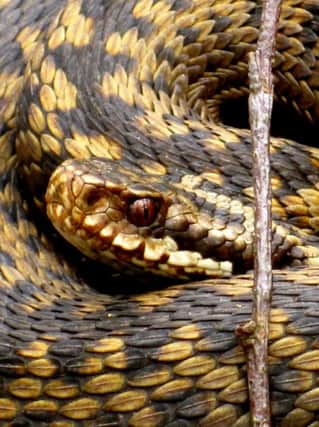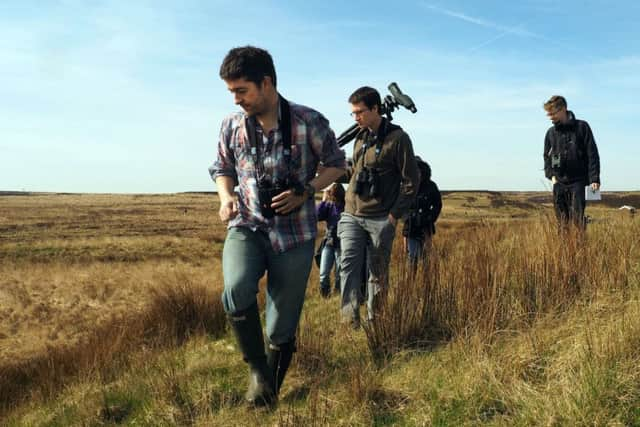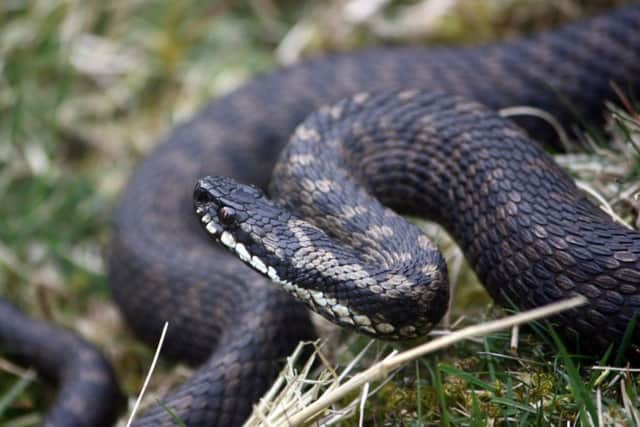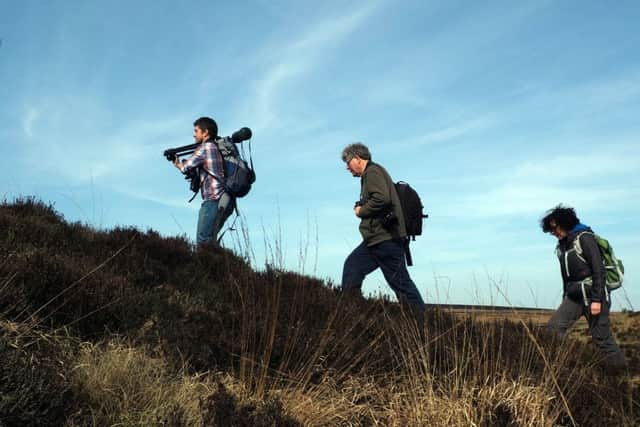Snakes on a Plain - recorded in Derbyshire


“The Eastern Moors are a great place to see adders, and although we think there are well over 400 in this area, the fact that they are reclusive and difficult to spot makes it really special when you do see one.”
Biologist David Carter has been monitoring adder populations for several years, and said the snake has declined in many parts of the UK, unlike the Eastern Moors, where careful land management is giving adders the right ground cover to raise young and hibernate. The fact that grouse moor owners didn’t plough up their land may also have helped adders on the moors between Baslow and Burbage a century ago.
Advertisement
Hide AdAdvertisement
Hide AdDuring a recent adder walk at Barbrook, several snakes were found catching the sun to warm up after a cold early spring night.


Male adders can turn electric blue in spring after they’ve shed their skin, and lucky adder watchers might even see an ‘adder dance’ where two half metre long males entwine to show off to a female.
The best time and place to see adders is when they’re basking in the sun late in the morning, on rocks or at the edge of vegetation, said Danny Udall, but adder watchers should avoid disturbing basking snakes by moving on rather than setting up a static camera or binoculars.
Snakes can’t hear, but they feel vibrations, so you should walk gently through the grass and heather, and look several yards ahead as most snakes will quietly slither away as you approach.
Advertisement
Hide AdAdvertisement
Hide AdAs long as people don’t approach adders too closely (and certainly don’t pick them up), the public have nothing to fear from our local snakes, said Danny Udall.


“Adders are not dangerous. For an average healthy adult, an adder bite is not significantly different to being stung by a wasp or a hornet,” said David.
400 local adders are another good reason to obey the law by keeping your dog on a lead on the moors, said Danny, which also reduces danger to livestock and nesting birds. Inquisitive dogs can be killed or made very ill from adder bites.
“One of my dogs was bitten and we ended up with a £2,000 vets bill,” Danny noted. Bitten humans shouldn’t panic, just stay still and call for medical advice, he said.
Advertisement
Hide AdAdvertisement
Hide Ad“The last thing adders want to do is come into contact with a person,” said Tom Aspinall from Moors for the Future. “If you’re not careful, they’ll disappear before you even know they’re there.”


The public can help monitor local adders, toads and lizards with the Moors for the Future ‘Scales and Warts’ survey developed along with Derbyshire Amphibian and Reptile Group. Download a free app or postcards from: http://www.moorsforthefuture.org.uk/community-science/scales-and-warts.